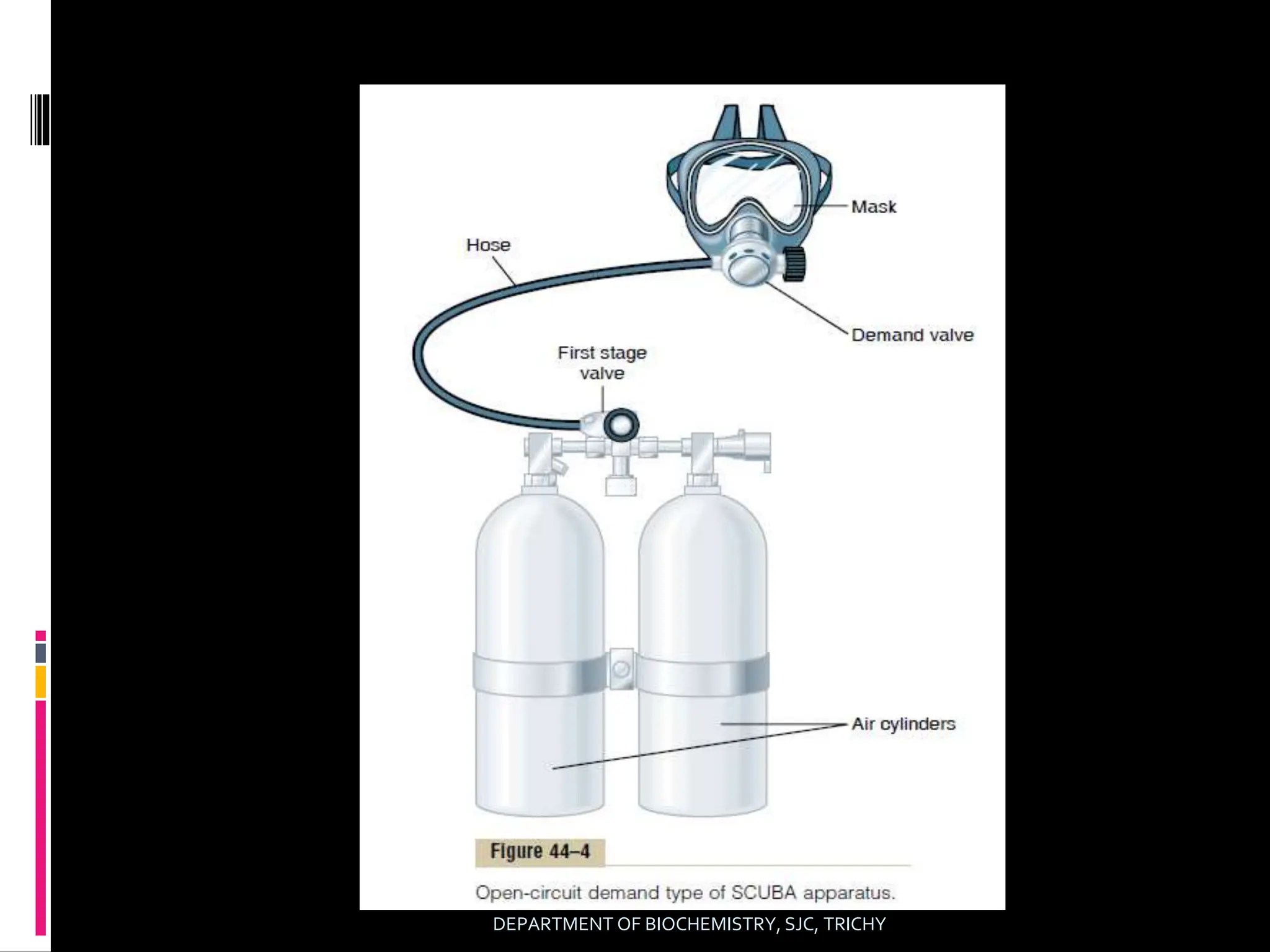This document discusses the physiological effects of aviation and deep sea diving. It covers topics like:
- Decreased barometric pressure and oxygen levels at high altitudes which can cause hypoxia.
- Acclimatization processes that help the body adapt to low oxygen environments over time, like increased ventilation.
- Physiological impacts of rapid changes in velocity and direction experienced during flights.
- Decompression sickness that can occur when divers surface too quickly due to nitrogen bubbles forming.
- Use of oxygen and different breathing apparatuses to mitigate issues from changes in atmospheric pressure underwater and at altitude.




























